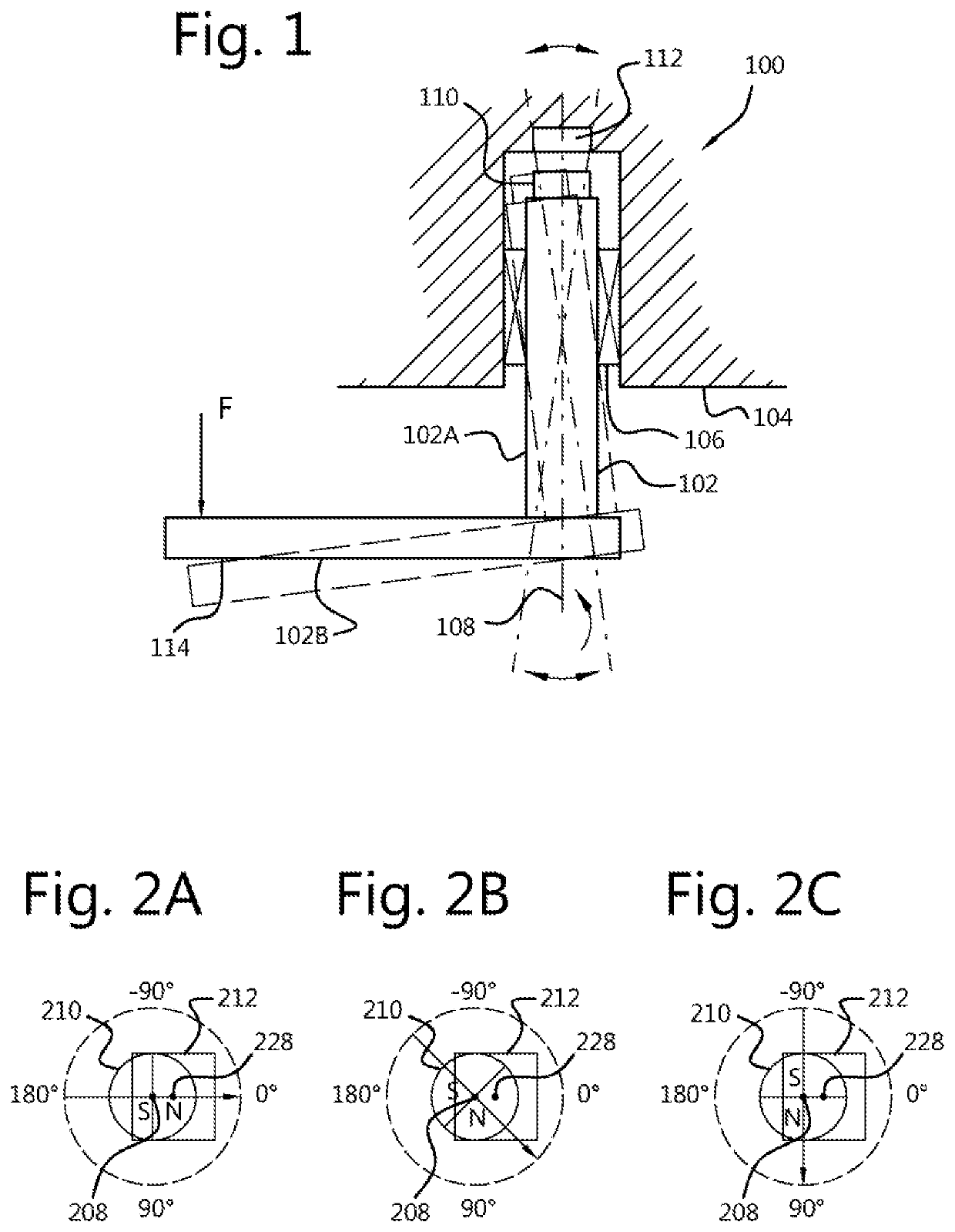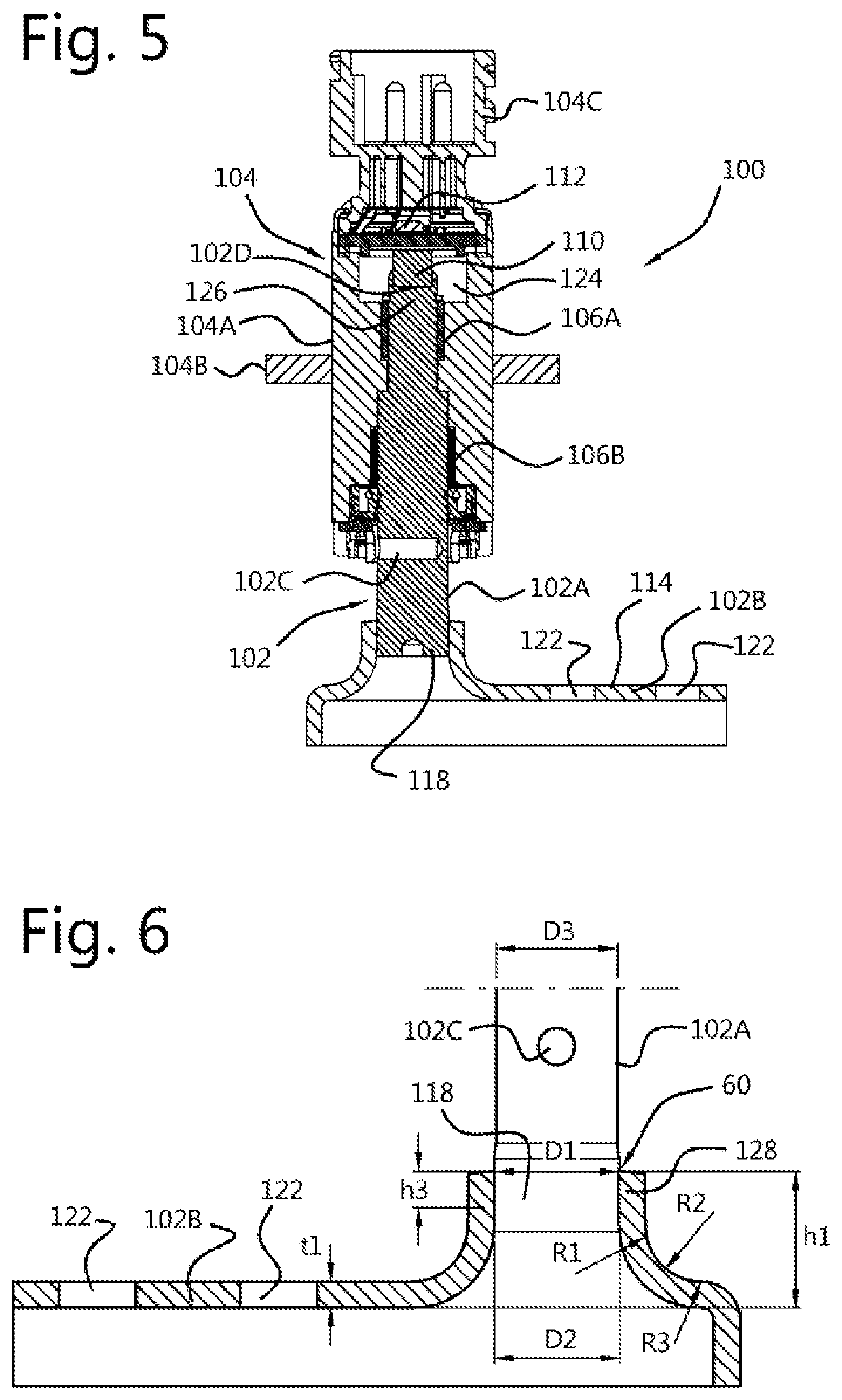Rotary position sensor and method of manufacturing the same
a technology of rotary position sensor and manufacturing method, which is applied in the direction of instruments, vehicle sub-unit features, transportation and packaging, etc., can solve problems such as errors in measured rotation angle, and achieve the effects of improving product life, improving product quality, and improving product li
- Summary
- Abstract
- Description
- Claims
- Application Information
AI Technical Summary
Benefits of technology
Problems solved by technology
Method used
Image
Examples
Embodiment Construction
[0029]The advantages, and other features of the technology disclosed herein, will become more readily apparent to those having ordinary skill in the art from the following detailed description of certain preferred embodiments taken in conjunction with the drawings which set forth representative embodiments of the present technology.
[0030]FIG. 1 shows schematically in a sectional view the effect of wear in a rotary position sensor. A rotary position sensor 100 is a sensor arrangement comprising a first structure 102 and a second structure 104. The first structure 102 is rotatably coupled to the second structure 104 by means of a bearing structure 106 having a rotation axis 108. The bearing structure may comprise one or more smaller bearings having the same rotation axis. A dipole magnet 110 is attached to the first structure with a direction of magnetic moment perpendicular to the rotation axis 108. A sensing unit 112 is attached to the second structure 104 and configured to measure ...
PUM
 Login to View More
Login to View More Abstract
Description
Claims
Application Information
 Login to View More
Login to View More - R&D
- Intellectual Property
- Life Sciences
- Materials
- Tech Scout
- Unparalleled Data Quality
- Higher Quality Content
- 60% Fewer Hallucinations
Browse by: Latest US Patents, China's latest patents, Technical Efficacy Thesaurus, Application Domain, Technology Topic, Popular Technical Reports.
© 2025 PatSnap. All rights reserved.Legal|Privacy policy|Modern Slavery Act Transparency Statement|Sitemap|About US| Contact US: help@patsnap.com



